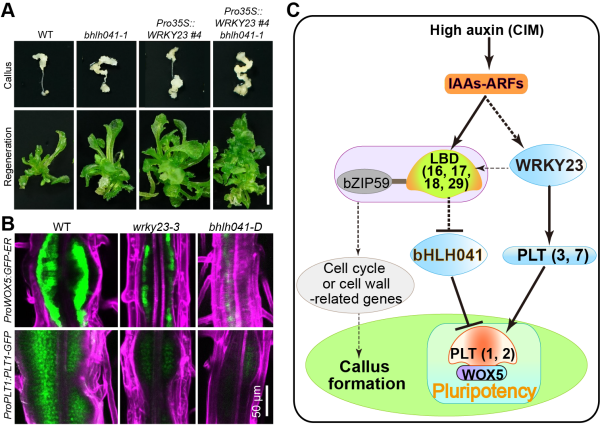更新于:2024-11-01

Institute of Botany, Chinese Academy of Sciences
更新于:2024-11-01
概览
标签
免疫系统疾病
心血管疾病
感染
小分子化药
疾病领域得分
一眼洞穿机构专注的疾病领域
暂无数据
技术平台
公司药物应用最多的技术
暂无数据
靶点
公司最常开发的靶点
暂无数据
| 排名前五的药物类型 | 数量 |
|---|---|
| 小分子化药 | 3 |
| 排名前五的靶点 | 数量 |
|---|---|
| HIV-1 capsid(HIV-1衣壳蛋白) | 1 |
| TRPC4 x TRPC5 | 1 |
关联
3
项与 中国科学院植物研究所 相关的药物靶点- |
作用机制- |
在研机构 |
原研机构 |
在研适应症 |
非在研适应症- |
最高研发阶段临床前 |
首次获批国家/地区- |
首次获批日期- |
作用机制 TRPC4抑制剂 [+1] |
在研机构 |
原研机构 |
在研适应症 |
非在研适应症- |
最高研发阶段药物发现 |
首次获批国家/地区- |
首次获批日期- |
作用机制 HIV-1 capsid抑制剂 |
在研机构 |
原研机构 |
在研适应症 |
非在研适应症- |
最高研发阶段药物发现 |
首次获批国家/地区- |
首次获批日期- |
100 项与 中国科学院植物研究所 相关的临床结果
登录后查看更多信息
0 项与 中国科学院植物研究所 相关的专利(医药)
登录后查看更多信息
69
项与 中国科学院植物研究所 相关的文献(医药)2018-11-05·IAWA Journal
The Neogene wood flora of Yuanmou, Yunnan, southwest China
作者: Li, Cheng-Sen ; Wang, Yu-Fei ; Mehrotra, R. C. ; Jin, Yue-Gao ; Jiang, Xiao-Mei ; Liu, Feng-Xiang ; Cheng, Ye-Ming
2002-08-01·TAXON
Karyomorphology of Heptacodium (Caprifoliaceae s.str.) and its phylogenetic implications
作者: Zhou, Zhe-Kun ; Zhang, Zhao-Yang ; Gu, Zhi-Jian
Comprehensive identification and characterization of abiotic stress and hormone responsive glycosyl hydrolase family 1 genes in Medicago truncatula
作者: Yang, Junfeng ; Yao, Yu ; Jiang, Wenbo ; Tang, Yuhong ; Ma, Lin ; Pang, Yongzhen
24
项与 中国科学院植物研究所 相关的新闻(医药)2024-09-05
·生物探索
引言
慢性丙型肝炎(Chronic Hepatitis C)是由丙肝病毒(Hepatitis C Virus, HCV)引起的一种肝脏炎症。全球约有5000万慢性丙肝病毒感染者,每年约新增100万感染病例。据世界卫生组织估计,2022年约有242,000人死于由丙型肝炎引发的肝硬化和肝癌等并发症。尽管目前已有针对丙肝的特效药物,如索磷布韦、达拉他韦等,但药物价格昂贵,且治愈患者仍有再次感染病毒的风险。因此,推动预防性HCV疫苗的发展具有重大的现实意义。
HCV是一种包膜的单链正链RNA病毒,属于黄病毒科丙型肝炎病毒属。其全长RNA约有9500个碱基对,编码一个超过3000个氨基酸的多聚蛋白前体。该前体在宿主细胞和病毒自身蛋白酶的作用下,裂解成多种独立的病毒蛋白。其中,表面糖蛋白E1和E2位于病毒包膜上,是高度糖基化的蛋白,也是病毒颗粒表面唯一的蛋白质组分。E1和E2以异源二聚体的形式存在于病毒颗粒包膜表面,对病毒侵入细胞至关重要,是现有丙肝病毒中和抗体的主要靶点,也是潜在疫苗开发的主要目标,因此其结构研究受到了广泛关注。然而,E1/E2复合物高度糖基化且结构极不稳定,使得结构解析极具挑战性。
此前,最完整的E1/E2结构研究是在2022年10月发表在Science杂志上的E1/E2与三种单克隆抗体形成的复合物【1】。该研究揭示了E1/E2的异二聚化界面、蛋白表面糖基化修饰以及抗体结合表位等关键结构信息,但复合物的跨膜结构域由于过于动态而未能解析。此外,HCV病毒颗粒表面的E1/E2蛋白被认为会形成更高阶的复合物组装形式。尽管其他包膜病毒如HIV、新冠病毒、流感病毒的表面刺突蛋白常形成三聚体结构,但HCV的E1/E2是否形成高阶聚体一直未得到结构信息的验证【2】。
2024年9月4日,哥本哈根大学免疫学和微生物学系(ISIM)的Jannick Prentø和哥本哈根大学生物医学科学学院的Pontus Gourdon和中国科学院植物研究所王开拓合作在Nature杂志上发表了The hepatitis C virus envelope protein complex is a homodimer of heterodimers。这项工作解析了首个丙肝病毒HCV表面糖蛋白E1/E2的高阶复合物冷冻电镜结构。研究结果表明,体外纯化的HCV E1/E2形成了二聚体组装形式,而非其他包膜病毒常见的三聚体结构。这一发现颠覆了先前的认知,对设计有效的HCV疫苗具有重要的指导意义。
技术上,由病毒学家和结构生物学家组成的联合研究团队在多年的合作研究中进行了多项技术创新,最终取得了这一成果。E1和E2蛋白的N末端和C末端对蛋白结构和功能至关重要,因此无法使用传统标签方法进行纯化。在先前的Science文章研究中,研究者采用带有Strep标签的单克隆抗体与蛋白复合物共表达,以抗原-抗体复合物的形式纯化整个蛋白复合物。而在本研究中,研究者将Strep标签设计在E2蛋白中间的一个柔性loop区,并进行了功能验证,使得单独纯化蛋白复合物成为可能。此外,由于蛋白复合物表达量极低且在体外体系中极不稳定,研究者克服了蛋白纯化和冷冻制样过程中的多项技术难题。在每次大规模纯化中仅能得到小于10微克样品的情况下,研究者成功对蛋白进行了结构解析。
针对蛋白样品的柔性,研究者们采用了多种新的冷冻电镜结构解析技术、密度加强及模型搭建算法。特别是在Alphafold【3】结构预测和基于深度学习的三维密度图后处理算法EMReady【4】的帮助下,研究者构建了几乎所有氨基酸序列的结构模型,覆盖了E1序列的96%和E2序列的90%。相比之下,Science文章中的结构模型仅包括51%的E1和82%的E2序列。
文章中最重要的发现是E1/E2异聚体能进一步组装成更高阶的二聚体复合物。这种二聚化是由E2蛋白介导的,相互作用面积约为1200平方埃,主要基于位于蛋白表面的多个氨基酸间的疏水或氢键相互作用,而蛋白表面的糖基基本不参与二聚化。二聚化使得此区域被包裹在复合体内部,而其他暴露区域表面多数都是高度糖基化的,这可能解释了HCV E1/E2糖蛋白复合物的低免疫原性。作者在此基础上开展了一系列的蛋白突变体生化和免疫实验,证明了二聚体界面中的氨基酸序列非常保守,对其突变会影响二聚体的稳定性。此外,先前的研究结果也显示,位于二聚化界面上至少一半的氨基酸残基在所有亚型HCV中都完全保守,且其突变会影响HCV假病毒颗粒(HCV pseudoparticle,或者HCVpp)对细胞的侵染活性【5】。
图二:HCV E1/E2蛋白复合物的冷冻电镜结构(Credit: Nature)
此次解析的结构还揭示了多种此前研究中未被观察到的结构细节。首先,复合物的跨膜螺旋区结构首次得到解析,复合物结构中的跨膜蛋白束排列较松散,平均分辨率约5埃,但结合Alphafold结构预测,研究者仍能搭建来自两个蛋白的总共6个跨膜螺旋模型。其中,M1-M2来自E1蛋白的PCR (putative fusion peptide containing region)区域,M1和M2螺旋中间的链接区域(272-281位氨基酸)非常保守,被认为是介导病毒颗粒与侵染细胞融合的肽段(putative fusion peptide,简称pFP);M3-M4来自E1蛋白的C端,M3前面还发现了一个可能平行于膜所在平面的螺旋,命名为MX螺旋;M5-M6位于E2蛋白的C端。
图三:HCV E1/E2复合物中跨膜结构域的位置和结构(Credit: Nature)
其次,结构中首次解析了E2蛋白N末端的区域,包括序列最多样化的hypervariable region 1 (HVR1)以及序列保守但结构非常不稳定的antigenic site 412 (AS412)。这些区域被认为对HCV的免疫逃逸至关重要,但其具体作用机制和结构尚不完全清楚。结构分析发现,HVR1区域可以隐藏多种HCV中和抗体的识别表位以及受体CD81的结合表位,而体外实验也证明,样品与多种中和抗体和受体CD81的结合能力在4摄氏度时较低,在温度升高时会升高,这暗示了此部分结构在病毒侵染和被免疫系统识别时需要进行一定程度的重排。
图四:E2蛋白N末端HCV1和AS412区域的结构及其对蛋白结合能力的影响(Credit: Nature)
参考文献
1. Torrents de la Peña A, Sliepen K, Eshun-Wilson L, et al. Structure of the hepatitis C virus E1E2 glycoprotein complex. Science. 2022;378(6617):263-269.
2. Freedman H, Logan MR, Hockman D, Koehler Leman J, Law JLM, Houghton M. Computational Prediction of the Heterodimeric and Higher-Order Structure of gpE1/gpE2 Envelope Glycoproteins Encoded by Hepatitis C Virus. J Virol. 2017;91(8):e02309-16.
3. Jumper J, Evans R, Pritzel A, et al. Highly accurate protein structure prediction with AlphaFold. Nature. 2021;596(7873):583-589.
4. He J, Li T, Huang SY. Improvement of cryo-EM maps by simultaneous local and non-local deep learning. Nat Commun. 2023;14(1):3217.
5. Pfaff-Kilgore JM, Davidson E, Kadash-Edmondson K, et al. Sites of vulnerability in HCV E1E2 identified by comprehensive functional screening. Cell Rep. 2022;39(8):110859.
https://www.nature.com/articles/s41586-024-07783-5
责编|探索君
排版|探索君
文章来源|“BioArt”
End
往期精选
围观
一文读透细胞死亡(Cell Death) | 24年Cell重磅综述(长文收藏版)
热文
Cell | 是什么决定了细胞的大小?
热文
Nature | 2024年值得关注的七项技术
热文
Nature | 自身免疫性疾病能被治愈吗?科学家们终于看到了希望
热文
CRISPR技术进化史 | 24年Cell综述
疫苗临床1期临床终止
2023-10-13
·生物谷
植物细胞具有很高的全能性,赋予了植物器官在活体或培养条件从头再生新的器官和完整植株的能力。基于细胞全能性发展起来的植物离体再生体系,被广泛应用于遗传转化和基因编辑等植物生物技术中。在经典的植物离体再生
植物细胞具有很高的全能性,赋予了植物器官在活体或培养条件从头再生新的器官和完整植株的能力。基于细胞全能性发展起来的植物离体再生体系,被广泛应用于遗传转化和基因编辑等植物生物技术中。在经典的植物离体再生体系中,生长素诱导的多能性愈伤组织形成是离体再生的第一步,被认为是植物细胞获得全能性的关键过程,对于不定芽或根的从头再生是必需的。研究表明,植物根干细胞因子在生长素诱导愈伤组织形成过程中的异位激活代表了愈伤组织全能性的建立,而一些参与根发育的生长素信号因子,如ARF及其下游的LBD转录因子被证明是控制愈伤组织形成的关键因子。然而,在愈伤组织诱导过程中,哪些因子负责根干细胞因子的激活并建立愈伤组织的全能性,尚不清楚。
中国科学院植物研究所胡玉欣研究组发现,拟南芥转录因子WRKY23和bHLH041分别作为根干细胞因子的转录激活子和抑制子协同激活了愈伤组织中的根干细胞因子。研究显示,WRKY23位于生长素响应因子ARF7/19下游通过直接激活根干细胞基因PLT3和PLT7,进而间接激活其下游的根干细胞基因PLT1、PLT2和WOX5的表达;而生长素诱导的LBD积累引起了bHLH041降解,进而释放了bHLH041对PLT1、PLT2和WOX5的转录抑制。进一步的研究表明,WRKY23介导的转录激活和bHLH041介导的转录解抑制协同建立了愈伤组织的全能性和芽再生能力。
该研究揭示了植物离体再生体系中愈伤组织全能性获得的转录调控机制,建立了生长素信号和细胞全能性的分子联系,结合研究组的前期工作,构建了植物离体再生过程中愈伤组织形成和全能性获得的分子框架。这一成果有助于促进基于植物离体再生的转基因和基因编辑技术的开发和应用。
相关研究成果在线发表在《植物细胞》(The Plant Cell)上。研究工作得到国家自然科学基金和中国科学院战略性先导科技专项的支持。
WRKY23和bHLH041分别作为转录激活子和转录抑制子协同建立愈伤细胞的芽再生能力

基因疗法
2023-10-08
·生物谷
下一步,李小波团队将致力于解析硅藻含叶绿素c的捕光色素-蛋白复合体生物合成所需的全部基因,并将试图在其他光合生物中重构该复合体,以拓宽该底盘生物的捕光光谱。
西湖大学生命科学学院李小波团队在国际顶尖学术期刊 Science 发表了题为:A chlorophyll c synthase widely co-opted by phytoplankton 的研究论文。
该研究首次揭示了叶绿素c合成酶编码基因及该酶作用机制,挖掘了叶绿素c的生理功能,讨论了该基因的演化形成与转移。
叶绿素c于1864年由爱尔兰物理学家乔治·斯托克斯首次报道,其合成酶的发现解决了长期以来困扰海洋光合作用领域的一个问题,并为海洋藻类捕光机制的合成生物学应用打开了一扇门。
传奇:从硅藻到叶绿素c
苏轼在《前赤壁赋》中写道:“寄蜉蝣于天地,渺沧海之一粟。”如果你拿出一滴海水放在显微镜中,你会看到一个生机勃勃的微观世界。硅藻,就是仿佛如此微不足道,却在海洋光合作用中起主导地位的生存强者。
硅藻作为单细胞真核生物,一般只有2微米到200微米,只有少数门类可以达到毫米级,所以在18世纪之前,人们甚至都不知道它们的存在。但硅藻的演化之路绝对是史诗级的——二次内共生。
目前主流理论认为,一个异养生命通过吞噬蓝细菌获得了光合作用的能力,演化出了绿藻与红藻,蓝细菌演化成了叶绿体,这是人们常知的第一次内共生。而硅藻的祖先,是不折不扣凶悍的掠食者,它们吞噬了已经具备细胞核与叶绿体的红藻,并获取了特定的红藻基因,这也被称为第二次内共生。
硅藻绝对是演化史中的“卷王”,也许是为了防御,硅藻还演化出了厚实的“装甲”——它们学会了利用二氧化硅,没错,你可以理解成它们给自己装上了颇为现代化的玻璃外壳。很多硅藻可以在有性生殖和无性生殖之间切换:平时进行无性生殖,然而由于其奇特的增殖方式,子代细胞会越来越小;在细胞小于一定阈值时这些硅藻则启动有性生殖。硅藻的祖先中有一支又另辟蹊径,演化出了多细胞的藻类,演化出巨大体型的褐藻,比如我们日常食用的海带。
正因为如此,李小波此前主要在国外从事莱茵衣藻光合作用的研究,但加入西湖大学之后逐渐认识到硅藻的独特性,决定将硅藻光合作用作为实验室一个重要的研究方向。李小波团队将目光投射到硅藻的捕光机制上,含有叶绿素c的捕光复合体的吸收光谱不同于陆地植物的捕光复合体,可以更高效地吸收水域中丰富的蓝绿光,这可能是各种真核藻类广泛采用叶绿素c的原因。
光合作用极其复杂,人类目前还不能完全解密,就叶绿素的种类与合成研究来说,也是走过了一段漫长的弯路。目前认为产氧光合生物主要含有五种类型的叶绿素:叶绿素a, b, c, d, f,其结构与合成路径各有不同。
与其他天然产物一样,叶绿素生物合成的每一步骤依赖于酶的催化,而每个酶有一个或多个基因编码。每种叶绿素生物合成通路的解析将使得该叶绿素在其他物种中的应用成为可能。
李小波团队开始了寻找叶绿素c合成酶的道路。
含叶绿素c藻类的多样性与生态功能示意图。作者:李小波实验室博士生杨雨青
挑战:锁定基因
得益于世纪之交分子遗传学工具的大发展,各种叶绿素生物合成的共有步骤或特异步骤所需基因已被发现。例如,蓝细菌叶绿素f于2010年被报道,其合成酶编码基因于2016年即已被解析。而叶绿素c发现于159年前,它的合成酶编码基因则长期以来未被突破。
为什么叶绿素c合成机制的研究这么难?
在真核藻类中,绿藻中的莱茵衣藻遗传学研究较多,然而绿藻不含有叶绿素c。硅藻、褐藻、定鞭藻、甲藻等含叶绿素c的门类在海洋固碳、海洋动物生存及栖息地的建立、海洋沉积物以及赤潮的形成等重要生态过程中扮演着不可或缺的角色,其中的海带(褐藻)还是人类喜爱的食物来源。然而这些藻类的遗传操作工具却相对落后。
硅藻类群中的模式物种三角褐指藻早在2008年就已完成基因组测序,但是由于硅藻细胞一般为二倍体,即每个细胞具有两套基因组,传统遗传学手段很难同时破坏基因的两个拷贝以测试其功能。但好消息是,近年来CRISPR基因编辑方法(2020年诺贝尔化学奖获奖成果)的进步使得一个基因的两个拷贝同时被破坏成为可能。
为了找到编码叶绿素c合成酶的基因,李小波团队从三角褐指藻基因组中根据各基因在不同生长条件下的表达水平差异,选取了数十个候选基因,依次进行敲除与表型检测。
其中一个候选基因的敲除突变体呈现出绿色表型,与野生型硅藻细胞的褐色外观形成鲜明对比。色素分析显示,该基因的突变体完全丢失了叶绿素c,同时,突变体中岩藻黄素(与叶绿素c处于同一色素-蛋白复合体的黄色色素)的含量显著降低,因此突变体呈现出比野生型更绿的颜色。在低光照条件下,该突变体表现出明显的生长劣势。
体外实验证实该基因编码的酶能够利用叶绿素生物合成途径中的常见前体直接合成叶绿素c,因此被命名为叶绿素c合成酶(Chl c synthase),简称CHLC。该酶与其他叶绿素合成通路组分的底物特异性可以解释叶绿素c结构的独特之处。
叶绿素c合成反应示意图。CHLC蛋白利用一系列辅因子在底物(DVP)侧链上形成碳碳双键
尾声:这意味着什么?
“这是一篇非常有趣的文章,首次记录了一种对当代水生生物光合作用至关重要的酶的活性和物种分布。文章所描述的叶绿素c合成酶的基因突变、突变体回补和生化活性研究令人信服。”审稿人对李小波团队的成果评价道。
叶绿素c合成酶编码基因同源基因的海洋分布示意图。Tara Oceans各采样站点均可发现同源基因
结合Tara Oceans全球海洋生物调查数据,研究团队发现CHLC同源基因广泛分布于全球海洋。在系统演化分析中,团队发现不含叶绿素c的生物(包括红藻)缺乏CHLC同源基因;而含有叶绿素c的定鞭藻、甲藻和隐藻均具有该基因。然而,与硅藻亲缘关系更近、同样含有叶绿素c的褐藻却缺乏该基因,这表明褐藻可能采用未知的、独立演化出的酶来合成叶绿素c。这一结果也表明现在的光合作用机制演化学说还有待修正。
下一步,李小波团队将致力于解析硅藻含叶绿素c的捕光色素-蛋白复合体生物合成所需的全部基因,并将试图在其他光合生物中重构该复合体,以拓宽该底盘生物的捕光光谱。此外,在光合生物中,海洋藻类的分子遗传学研究远滞后于陆地植物,然而它们却具有多种独特的生物过程,如无机细胞壁纳米斑图的形成。因此,李小波团队一直为寻找海洋藻类宏观和微观现象的分子生物学解释而努力。
李小波实验室成员合影
西湖大学博士生蒋彦酉与助理研究员曹天骏为论文共同第一作者;副研究员张欢、博士生杨雨青、博士生张静宇参与了本项研究;李小波为论文通讯作者。项目的进行得到了西湖大学张骊駻研究员、西湖大学甄莹研究员、中科院植物所王文达研究员、南京大学赵雪博士等的建议,并得到了西湖大学分子科学公共实验平台、西湖大学生物医学实验技术中心等的技术支持。西湖大学博士生尤婷婷、博士生毛卓、博士生刘润洲、科研助理郭康宁、科研助理杨津在实验过程或论文写作过程中提供了帮助。

100 项与 中国科学院植物研究所 相关的药物交易
登录后查看更多信息
100 项与 中国科学院植物研究所 相关的转化医学
登录后查看更多信息
组织架构
使用我们的机构树数据加速您的研究。
登录
或

管线布局
2025年01月10日管线快照
管线布局中药物为当前组织机构及其子机构作为药物机构进行统计,早期临床1期并入临床1期,临床1/2期并入临床2期,临床2/3期并入临床3期
药物发现
2
1
临床前
登录后查看更多信息
当前项目
| 药物(靶点) | 适应症 | 全球最高研发状态 |
|---|---|---|
DCP-118 | 血栓形成 更多 | 临床前 |
SJP-L-5 ( HIV-1 capsid ) | HIV感染 更多 | 药物发现 |
M-084 ( TRPC4 x TRPC5 ) | 抑郁症 更多 | 药物发现 |
登录后查看更多信息
药物交易
使用我们的药物交易数据加速您的研究。
登录
或

转化医学
使用我们的转化医学数据加速您的研究。
登录
或

营收
使用 Synapse 探索超过 36 万个组织的财务状况。
登录
或

科研基金(NIH)
访问超过 200 万项资助和基金信息,以提升您的研究之旅。
登录
或

投资
深入了解从初创企业到成熟企业的最新公司投资动态。
登录
或

融资
发掘融资趋势以验证和推进您的投资机会。
登录
或

标准版
¥16800
元/账号/年
新药情报库 | 省钱又好用!
立即使用
来和芽仔聊天吧
立即开始免费试用!
智慧芽新药情报库是智慧芽专为生命科学人士构建的基于AI的创新药情报平台,助您全方位提升您的研发与决策效率。
立即开始数据试用!
智慧芽新药库数据也通过智慧芽数据服务平台,以API或者数据包形式对外开放,助您更加充分利用智慧芽新药情报信息。
生物序列数据库
生物药研发创新
免费使用
化学结构数据库
小分子化药研发创新
免费使用
